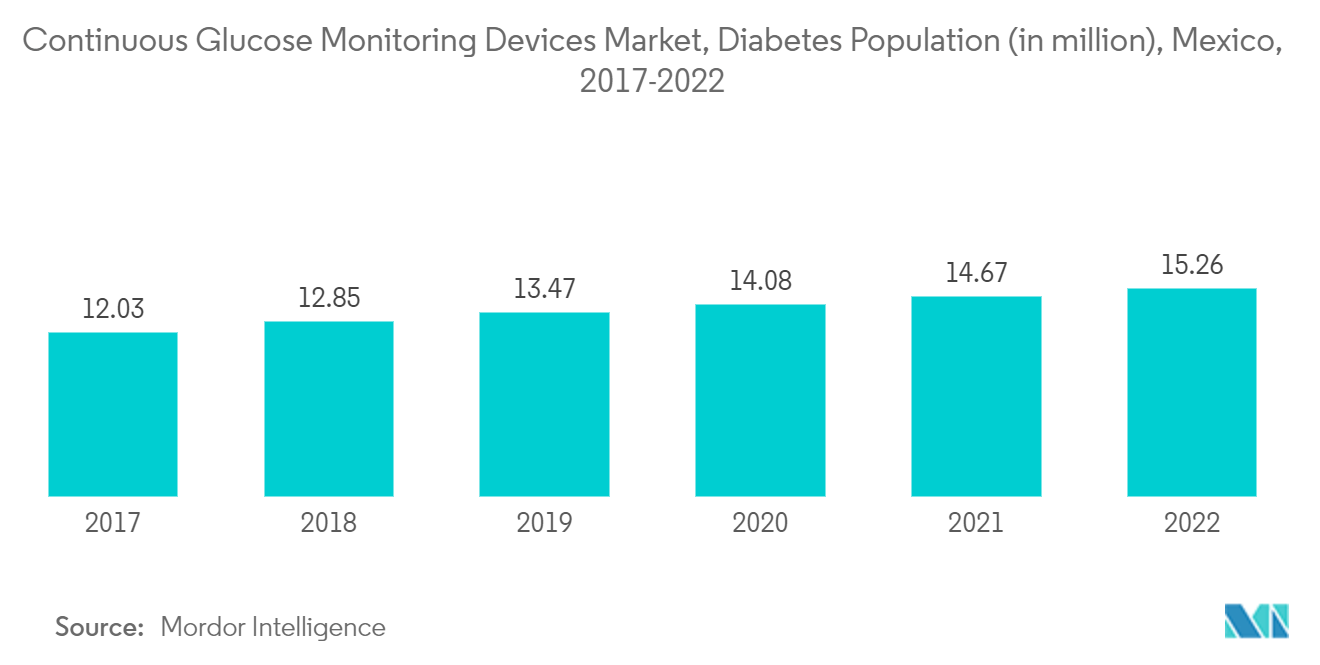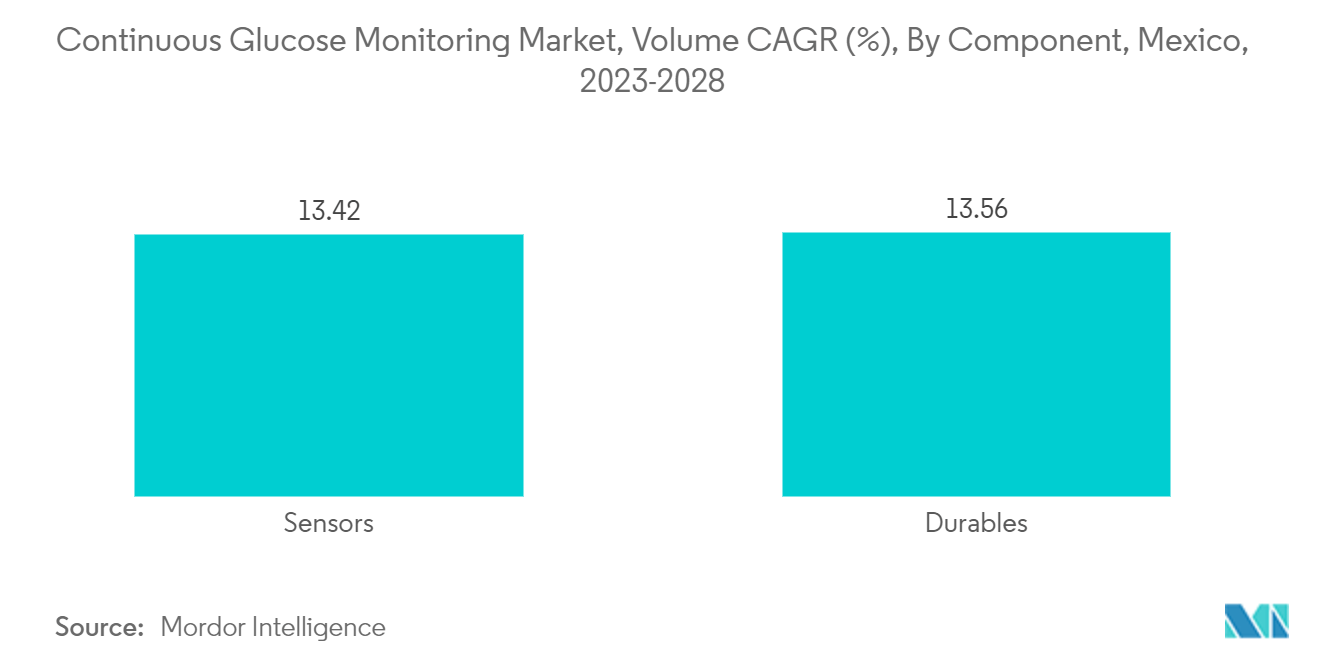Market Trends of Mexico Continuous Glucose Monitoring Industry
Rising Diabetes Prevalence in Mexico
The Mexican diabetes population is expected to rise by about 3.4% over the forecast period.
According to IDF Diabetes Atlas's latest estimates, the prevalence of diabetes in Mexico reached 16.9%, or one in six adults. An estimated 14.1 million adults in Mexico are living with diabetes. Additionally, 11 million adults in the country have Impaired Glucose tolerance, which places them at high risk of developing type 2 diabetes. Diabetes-related health expenditure in Mexico has reached USD 19.9 billion, putting it in the top ten countries with the highest total health expenditure. About 47.5% of people living in Mexico with diabetes are undiagnosed.
Lack of health insurance deprives people of access to services and puts them at risk of financial hardship. To protect the people against excessive health expenditures, Mexico has implemented mechanisms such as community-based health insurance, national health insurance, and targeted public health insurance. Mexico has multiple health insurance providers. The Instituto de Seguridad y Servicios Sociales de los Trabajadores del Estado (State Employee’s Social Security and Social Services Institute, ISSSTE) provides coverage for government employees, and the Instituto Mexicano del Seguro Social (Mexican Social Security Institute, IMSS) covers for private-sector employees. The Seguro Popular (People’s Insurance) was launched to protect the working-age population against steep healthcare costs. Enrolment in the Seguro Popular is independent of health status or pre-existing illness; there is no co-payment by the type of health care received, and family contributions are determined solely by the ability to pay.
The Ministry of Health also launched a national program for health that integrates efforts for diabetes prevention, education, and control along with a system of primary health clinics focused on the treatment of obesity, diabetes mellitus, high cholesterol, and high blood pressure, with an interdisciplinary team. These clinics developed improved guidelines for the prevention, detection, and control of NCDs with behavioral components. They also use technology to optimize attention and improve monitoring and evaluation.
Therefore, owing to the increasing diabetes prevalence and government support initiatives the studied market is anticipated to witness growth over the analysis period.

The sensors segment is expected to witness the highest growth rate over the forecast period
Continuous glucose monitoring sensors use glucose oxidase to detect blood sugar levels. Glucose oxidase converts glucose to hydrogen peroxidase, which reacts with the platinum inside the sensor, producing an electrical signal to be communicated to the transmitter. Sensors are the most important part of continuous glucose Monitoring. Technological advancements to improve the accuracy of the sensors are expected to drive segment growth during the forecast period.
Researchers are trying to find and develop alternatives to electrochemical-based glucose sensors and create more affordable, minimally invasive, and user-friendly CGM sensors. Optical measurement is a promising platform for glucose sensing. Some technologies have been reported to have high potential in continuous glucose sensing, including spectroscopy, fluorescence, holographic technology, etc. Eversense, a CGM sensor based on fluorescence sensing developed by Senseonics Company, presents a much longer lifespan in comparison with electrochemical sensors.
Diabetes mellitus in Mexico has been declared a national emergency, and the country has designed various control programs, such as the National Strategy for the Prevention and Control of Overweight, Obesity, and Diabetes, based on public health, medical care, and fiscal and regulatory policies. Government actions to control diabetes include communication programs to raise awareness about the disease and the benefits of healthy weight, diet, and physical activity, self-care diabetes campaigns, guidelines to diagnose and control diabetes, development of self-support groups for diabetic patients, and the development of a National Health Card for adults. Such initiatives are expected to create awareness among the people regarding the monitoring and control of diabetes, thereby enhancing the market prospects in the years to come.
The aforementioned factors are set to boost market growth.


